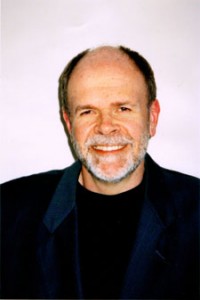To celebrate Earth Day this year, we asked a range of Island Press authors to briefly answer the question "Within your field, what specific progress on an environmental issue do you hope has been made by next Earth Day?" From your backyard to our galactic neighbors, they offered a chorus of solutions, food for thought, and—most of all—hope.
 |
James Aronson, co-author of Ecological Restoration, Second EditionAfter 30 years of hard work, the science and practice of ecological restoration are now called upon by the European Commission (European Parliament 2012) and by the UN Convention on Biological Diversity, as well as many national governments and major NGOs (IUCN, World Resources Institute, WWF, and Nature Conservancy) to help society scale up restoration actions and achieve new levels of effectiveness in fighting biodiversity loss and ecosystem degradation, and indeed to attenuate anthropogenic climate change. The Society for Ecological Restoration, and dozens of other NGOs, not to mention hundreds if not thousands of cooperatives, agencies, academic groups and companies are rolling up their sleeves. Really exciting things are happening in South America, South and West Africa, in East Asia, and finally, in Europe. A huge stumbling block everywhere is the need for training, inspiration, and capacity-building of competent and passionate practitioners. |
 |
Anthony Barnosky, author of Heatstroke:The nations that are the chief emitters of greenhouse gases need to agree on a strategy to reduce emissions fast. The cuts needed across the G20 nations are in the neighborhood of 6 percent per year each year to 2100, starting now. I'd hope that by Earth Day 2015, specific proposals to to achieve that are on the table and that the USA will be leading the charge for binding agreements. |
 |
Yoram Bauman, co-author of The Cartoon Introduction to Climate Change (forthcoming):I hope that folks in Washington State (including the Carbon Washington group I'm part of) will have begun collecting signatures to put a revenue-neutral carbon tax on the statewide ballot in November 2016, and that folks in Oregon will also be making progress towards establishing a West Coast carbon pricing bloc! (British Columbia already has a terrific carbon tax, and California has a cap-and-trade system. |
 |
F. Kaid Benfield, author of People Habitat:I would like to see more cities, developers, and—importantly—suburbs adopt standards and practices for green infrastructure to manage stormwater runoff. Green infrastructure—use of permeable surfaces such as pavers and porous pavement, green roofs, and strategically functional landscaping to take advantage of natural absorption and evaporation of rainwater—can do a lot to help clean our urban waterways while reducing the heat island effect and beautifying our neighborhoods. Philadelphia is setting a great precedent by pledging that at least one third of its currently “gray” impervious acres will be greened within 25 years, and I hope others follow suit. |
 |
Michael R. Boswell, co-author of Local Climate Action Planning:In light of the new report from the IPCC on the impacts of climate change, by the next Earth Day I would like to see all communities assess their vulnerability to climate change and develop plans to prepare and adapt. Creating a more resilient community will not only help these communities bear the impacts of climate change but will also provide numerous economic, social, environmental, and health co-benefits. |
 |
Hillary Brown, author of Next Generation InfrastructureCentral to our environmental, social and economic welfare, America’s renewal of its critical infrastructure – its aging energy, water, waste, communication, and transportation systems—gets underway. Prompted by new political will and more innovative policies and investment vehicles, the renewal of public works and utilities will transcend industrial-era formulas. Instead, planners, agencies and professionals will devise more integrated, multifunctional, and synergistic solutions that capitalize on a connectedness to nature and each other (across sectors); that simultaneously tackle both climate mitigation and adaptation; and that extend benefits to neighboring communities—essential tactics for future-proofing vital urban systems. |
 |
Andre F. Clewell, co-author of Ecological Restoration, Second Edition:Ecological restoration is that strategy which fosters recovery of degraded ecosystems and expands global capacity to conserve biodiversity. For that reason, 174 nations signed an accord by the United Nations Convention on Biological Diversity to restore 15% of the world’s degraded ecosystems by the year 2020. In spite of valiant contributions by Island Press, too many people still don’t understand what restoration is, and too few people have the experience and training to design and implement restoration projects. In face of our present dearth of knowledge and knowhow, we must intensify our resolve if we are to restore 15% of degraded ecosystems anytime soon. We must remember what one Island Press Book on ecological restoration asserts, “Nature sustains us; therefore, we serve our own interests when we reciprocate and sustain nature.” |
 |
Dominick A. DellaSala, editor of Temperate and Boreal Rainforests of the World:Here are three steps I hope President Obama takes by Earth Day next year: 1. Protect high biomass forests and other public lands as part of climate change insurance—~ 33 million acres of moist carbon-dense, mature forests that store massive amounts of carbon could become a national carbon trust and numerous other public lands proposals await consideration as national monuments for their climate and biodiversity benefits. 2. Transition the Tongass rainforest, one of only five remaining intact temperate rainforests globally, out of old growth logging by rapidly shifting timber supply to second growth. 3. Stop the Keystone pipeline from reaching US refineries that, according to Dr. James Hansen, if approved, would be “game over” on climate change. |
 |
Cristina Eisenberg, author of The Carnivore Way:Large carnivores such as wolves, grizzly bears, wolverines, and lynx stand at a crossroads at which the US federal government is proposing to make significant changes in their legal status—removing Endangered Species Act protection from some, adopting recovery plans for others. Many experts believe that these policy actions may not be based on best science. Given how critical these species are to ecosystem health and how at risk some of them are, by Earth Day next year I hope that we resolve this conservation debate in a manner that enables large carnivores to thrive in as many places as possible. |
 |
Peter Fox-Penner, author of Smart Power:Earth Day is a day to dream big, so my dream is to see a global accord limiting greenhouse gases in all the major nations in the world and a second global accord preserving biodiversity and endangered global habitats. Finally, I hope for more technologies that improve the environmental footprint of natural gas production, including reduced methane leakage. EPA is already working on this. |
 |
Peter H. Gleick, author of The World's Water Volume 8:As we head toward another Earth Day, another circle of the planet around the Sun, it would be great to see continued and accelerated progress toward providing everyone with access to safe water and sanitation. The benefits would be enormous: with the opportunity for improved educational opportunities for young women, reductions in preventable water-related diseases, greater economic choices, and reduced political conflict over this scarce and precious resource. Oh, and have we stopped hunting the whales yet? |
 |
Robert Glennon, author of Unquenchable:Conserving water is vital to us as a people, and we have a simple, effective way to save water by doing something that we do every day. Turn off a light. It takes a lot of water to produce energy. A single 60-watt incandescent bulb that burns 12 hours a day may annually use as much as 6,300 hundred gallons of water. If each of the more than 300 million Americans turned off a light, we’d save 1.9 trillion gallons of water. |
 |
Kristin E. Haskins, co-editor of Plant Reintroduction in a Changing Climate:By the next Earth Day, I would like to see an increase in the number of management and recovery plans that take climate change into consideration when planning for the future of endangered and threatened species. I personally feel like climate change is one of the biggest threats out there to rare species, yet I see little action to mitigate for this imminent threat. |
  |
Christopher Johnson and David Govatski, co-authors of Forests for the People:The most recent report from the UN’s Intergovernmental Panel on Climate Change warns of major disruptions in the coming decades from climate change, including flooding in coastal areas, hunger because of warming and drought, increasingly severe storms, and enormous population dislocations as rising ocean levels make coastal areas uninhabitable. The Obama administration has shown leadership by committing the United States to reduce greenhouse gas emissions by the year 2020, using 2005 as the benchmark. We would hope that by next year, Congress would cooperate with the White House in writing and enacting cap-and-trade legislation, unleashing the power of markets to reduce greenhouse gas emissions even more quickly, spur the growth of alternative forms of energy, and create the tens of thousands of jobs that investment in this emerging energy sector would stimulate. |
 |
Sadhu Johnston, co-author of The Guide to Greening Cities:Cities are doing a great deal to address the climate crisis, but they can’t do it alone. We absolutely need federal action on climate. I’d like to see a national carbon reduction program adopted by the US government to systematically reduce carbon emissions across all sectors of the US economy. |
 |
Robert B. Keiter, author of To Conserve Unimpaired:New meaningful landscape conservation initiatives designed to expand or protect national park and other nature reserve boundaries to address mounting ecological fragmentation and climate change concerns, thus safeguarding our at-risk wildlife resources. This could take the form of new Antiquities Act national monument designations, congressional expansion of strategic park or wilderness boundaries, or new institutionalized interagency planning and coordination processes. It also could involve the designation, either legislatively or administratively, of new wildlife corridors to facilitate migration, dispersal, or relocation efforts. |
 |
Marc J. Kuchner, author of Marketing for Scientists:I hope we meet some intelligent extraterrestrials and that they teach us to our take care of own planet. |
 |
Michael Kugelman, co-editor of The Global Farms Race:Pakistan is one of Asia's most water-short countries, but it also has some of the most promising water conservation practices in the region. Here's hoping that by next year's Earth Day, Pakistan has continued to expand its rainwater harvesting initiatives. These have already been implemented in parts of Karachi, but there's certainly great potential for more. |
 |
Heather Leslie, co-editor of Ecosystems-Based Management for the Oceans:Climate change is the most daunting and wide reaching human impact facing our world's oceans, and the billions of people who rely on them. I sincerely hope that the participants in the COP 20 negotiations in Lima, Peru in December 2014 make substantial progress that enables the world to mitigate and adapt to climate change, and that this effort includes active discussion of ocean ecosystems and the benefits they provide to people. |
 |
Joyce Maschinski, co-editor of Plant Reintroduction in a Changing Climate:By next Earth Day, I would like to see continued and increased efforts to protect natural areas, as well as re-establishing natural native vegetation within urban matrices. I would like residents in urban areas to have easily accessible urban trails so that they might connect with native plants and nature. |
 |
Emily Monosson, author of Evolution in a Toxic World:I would like to see corporations step up and be responsible for the chemicals they produce and release and the associated health effects; whether pesticides, plastics, fuel, or sugar. Can you imagine how different the world would be if that happened? |
 |
Lucy Moore, author of Common Ground on Hostile Turf:Having lived in Navajo Country for several years, I care deeply about the health and welfare of those people. And as a mediator, I have worked on remediation of uranium mine and milling sites. By April 2015 I hope to see the recently-awarded EPA funds hard at work removing, and safely disposing of, contaminated soil and water at Churchrock, a Navajo community in northwestern New Mexico that has suffered for decades from the legacy of uranium mining. |
 |
Darrin Nordahl, author of Making Transit Fun!:One of the healthiest things we can do for both our bodies and our planet is to ride our bicycles for transportation. And people in cities around the world have shown a desire to do so; if only they could do it on city streets and feel comfortable and safe doing so. Cycle tracks—protected bike lanes—do just that: encourage folks to ride their bikes more frequently on city streets because of the protection they afford. Come Earth Day 2015, I hope cities throughout the United States will have built (or have immediate plans for building) cycle tracks on their city streets. |
 |
James L. Sipes, co-author of Creating Green Roadways:By this time next year I would like to see our nation continue to rethink how we address transportation issues and come up with solutions that are safe, sustainable, environmentally friendly, visually attractive, and help improve community character. Anyone can help but walking and cycling more. Anything we can do to get people to park their automobile reduces energy consumption and emissions. Simply increasing bicycling from 1% to 1.5% of all trips in the U.S. would save 462 million gallons of gasoline each year, and would help protect our natural resources. |
 |
Galina Tachieva, author of Sprawl Repair Manual:The best environmental contribution in the field of urban planning for the next year is to implement as many retrofits in our sprawling communities as possible. Sprawl is a major cause of air and water pollution, loss of natural habitats, energy and resources. Injecting urbanity into the suburban fabric through infill and repair will reduce our car-dependence and will contribute to a more balanced and healthy metropolis. |
 |
Sim Van der Ryn, author of Design for an Empathic World:1. More greenery in our cities with living roofs, walls, interiors, and open green areas good for people, water absorption and absorbing CO2 replaced with plant producing oxygen. 2. Replacing fossil fuel energy use in our buildings and cars with cheaper, more abundant, cleaner energy from the sun. 3. Bringing our fractured society together with empathy and an awareness of the “common good”—a term that seemed to have disappeared from our language. |
 |
Jarrett Walker, author of Human Transit:By next Earth Day, I hope every planner and developer will understand how to recognize a transit-friendly place, and will understand the urgency of choosing such places when locating anything that will need transit service: apartments, shopping centers, and facilities for disadvantaged groups. Transit agencies are being bankrupted by demands for service to low-ridership, transit-hostile places, just because somebody powerful made a poor location choice. The convergence between urban form and transit is essential to sustainable urbanism, so the creators of urban form must understand the geometric features of successful transit, and how to recognize and foster them. |
  |
Brian Walker and David Salt, co-authors of Resilience Practice:The big issue facing the world in the coming years is the food-energy-water nexus under the drivers of climate change and population growth. Despite our growing understanding of their inter-connections and the inevitable catastrophe if nothing changes, the situation only seems to grow worse, the future ever more uncertain. The most important area where progress is needed is recognition by big business (international corporations) and then action with joint industry/government in initiatives to build a more resilient future. |
 |
Alexandros Washburn, author of The Nature of Urban Design:By next earth day can we seek a balance where we manage our relation to nature and see cities as habitats for people? Not be afraid of nature, and not be afraid of what we do to nature. To act. To build our cities with natural models, to manage risk while improving quality of life, and realize that in the process, both we and nature will change. |
 |
June Williamson, author of Designing Suburban Futures:Enough with starchitecture and navel gazing! By next Earth Day, or before the next storm disaster, I hope that significant progress will have been made in discouraging continued car-dependent, low-density, use-separated suburbanization in vulnerable locations, by the implementation of fair policies, the adoption of revised urban codes, the creation of robust development and design incentives, and the creative focus of the best designers. We’ve urbanized more than enough land already; it’s past time to shift to a higher gear in retrofitting our suburbs and cities to be the resilient urban places we deserve to live in. |
 |
Richard Willson, author of Parking Reform Made Easy:My hope is that cities will reform their minimum parking requirements by reducing the amount of parking they compel developers to build. This will lessen the direct environmental impacts of parking and begin to unwind the incentive that parking creates for private vehicle travel. Less private vehicle travel will help us make progress on reducing energy consumption, pollution, and greenhouse gas emissions. |


